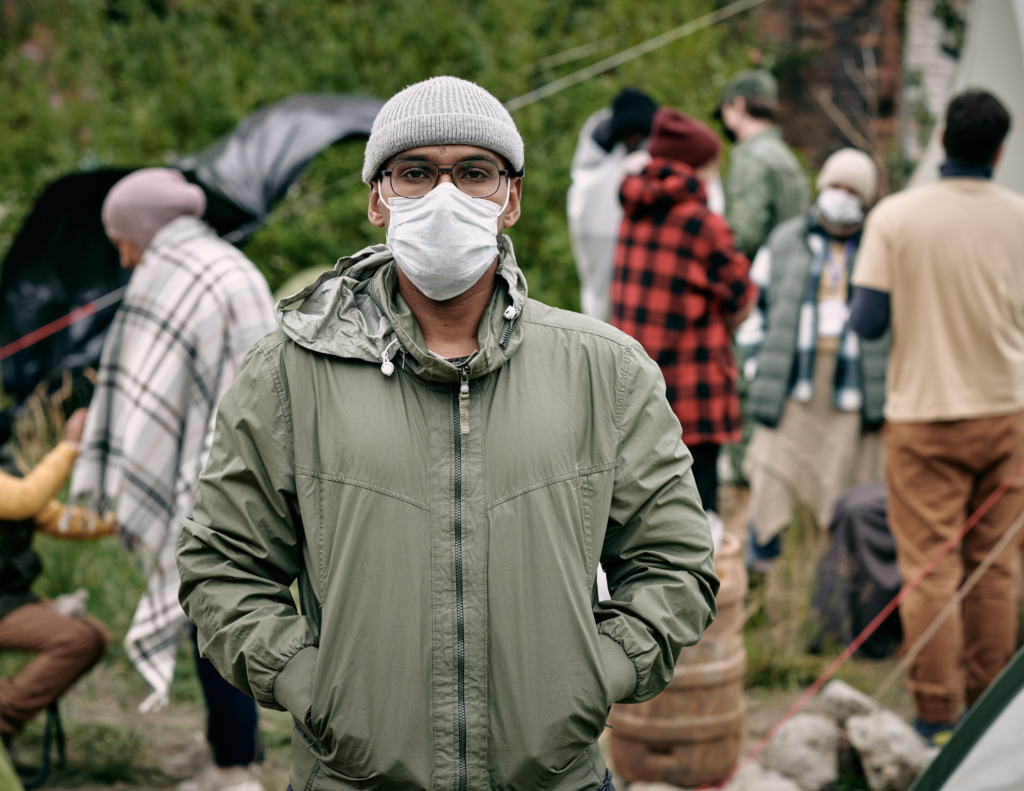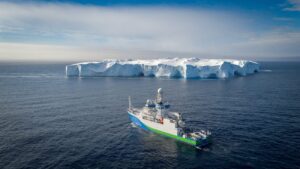Across the globe, climate change’s footprint isn’t just scorching landscapes and erratic weather; it’s driving millions to migration. The World Bank estimates 21.5 million people were forcibly displaced by weather-related events between 2008 and 2016, and projections paint a chilling picture of a future with 143 million climate migrants by 2050 [1]. Understanding this phenomenon, often misconstrued as a “climate refugee” crisis, demands a shift in perspective – from solely focusing on the “push factors” that uproot people, to exploring “pull solutions” that create a safe and practical route for those seeking a better future.
For decades, the narrative around climate migration has been dominated by haunting visuals: island homes swallowed by encroaching seas [2],

parched farmlands cracking under a relentless sun [3],

and communities battered by increasingly frequent storms [4]. These are the undeniable push factors, the environmental pressures that exert an increasingly unbearable force on vulnerable populations. In Bangladesh, sea levels rise at an alarming 8mm per year, threatening the homes of 20 million people [5]. In Mali, drought has shrunk the once-vast Lake Chad by 90% since the 1960s, displacing millions dependent on its waters [6].

These stories are not outliers; they paint a chilling portrait of a planet in flux, propelling millions towards an uncertain future.
However, fixating solely on push factors presents a limited and reactive approach. Predicting the exact patterns and timelines of climate-induced migration is notoriously difficult [7], and simply waiting for people to be uprooted before scrambling to respond is not only inefficient but also inhumane. It risks leaving entire communities at the mercy of environmental disasters, fueling xenophobia and border tensions in receiving countries, and ultimately failing to address the root causes of the problem.

This is where pull solutions emerge as a beacon of proactive hope. Instead of simply reacting to displacement, pull solutions proactively create new opportunities and build resilience in regions vulnerable to climate change. This can involve a range of strategies:
Investing in climate-resilient infrastructure and livelihoods:
From drought-resistant crops and water-harvesting systems to renewable energy projects and early warning systems [8], equipping communities with the tools to adapt and thrive in a changing environment can prevent displacement before it starts. The Food and Agriculture Organization’s “Investing in Resilience” program, for example, has helped Ethiopian farmers adopt drought-resistant seeds and water-saving irrigation techniques, increasing yields by 80% in some areas [9].
Fostering regional cooperation and migration partnerships:
Sharing knowledge, resources, and best practices across borders can help countries collectively manage the challenges of climate migration. The African Union’s Special Program on Migration in Africa promotes regional dialogue and facilitates skills development programs for climate migrants, fostering smoother integration into host communities [10].
Developing legal frameworks and pathways for safe and orderly migration:
By establishing clear and predictable avenues for migration, we can avoid chaotic border crossings and protect the rights of those forced to move. The Platform on Disaster Displacement operates a global database of legal and policy frameworks relating to climate displacement, advocating for better protection and inclusion of climate migrants [11].
Promoting economic opportunities and social integration in receiving countries:
Welcoming climate migrants as valuable contributors, not burdens, requires targeted policies that facilitate access to education, healthcare, and employment. Initiatives like the “Migrant Integration Facility” in Germany offer language courses, vocational training, and job placement assistance to support smooth integration of newcomers [12].
The success of pull solutions isn’t just theoretical. We are already witnessing inspiring examples across the globe. In the Pacific Islands, the “Pacific Resilience Program” has strengthened coastal communities through seawall construction, mangrove restoration, and climate-smart agriculture, reducing vulnerability to rising sea levels and storms [13]. In Kenya, the “Green Climate Fund” project has empowered pastoralist communities through drought-resistant livestock breeds and rangeland management techniques, fostering adaptation and boosting resilience [14].

Challenges and Opportunities:
Of course, challenges remain. Implementing pull solutions requires significant financial resources, unwavering political will, and robust international cooperation. Addressing potential social tensions and ensuring equitable outcomes for both sending and receiving communities is crucial. However, embracing the challenge now leads to a brighter future for all . By building resilient communities, promoting sustainable development, and managing migration in a safe, orderly, and beneficial way, pull solutions offer a transformative approach to the complex challenges of climate change and human mobility.
The time for reactive measures is over. We must shift our focus from simply responding to displacement to proactively creating the conditions that allow people to stay rooted in their homes, adapt to a changing environment, and build a future of dignity and hope. This is not just about migration; it’s about building a more just and sustainable world for all.
As the tide of climate change continues to rise, let us not merely watch from the shore; let us extend a helping hand and build bridges to a brighter future, together.

[1] World Bank. (2018). Groundswell: Preparing for Internal Climate Migration. https://www.worldbank.org/en/news/press-release/2021/09/13/climate-change-could-force-216-million-people-to-migrate-within-their-own-countries-by-2050
[2] Intergovernmental Panel on Climate Change. (2019). Special Report on the Ocean and Cryosphere in a Changing Climate. https://www.ipcc.ch/srocc/
[3] United Nations Environment Programme. (2021). Global Assessment of Desertification. https://wedocs.unep.org/20.500.11822/31094
[4] Internal Displacement Monitoring Centre. (2023). Global Report on Internal Displacement. https://www.internal-displacement.org/publications/2023-global-report-on-internal-displacement
[5] Bangladesh Centre for Advanced Studies. (2020). Sea Level Rise in Bangladesh: Trends and Impacts. https://sealevel.climatecentral.org/uploads/ssrf/Report-Bangladesh.pdf
[6] Food and Agriculture Organization. (2023). Lake Chad Basin: A Region in Crisis. https://www.fao.org/3/i5188e/I5188E.pdf
[7] World Migration Report. (2020). The Age of Migration: Building Bridges, Not Walls. https://www.guilford.com/books/The-Age-of-Migration/Haas-Castles-Miller/9781462542895
[8] World Bank. (2020). Adapting to Climate Change: A Guide for Local Governments. https://openknowledge.worldbank.org/handle/10986/34780
[9] Food and Agriculture Organization. (2022). Investing in Resilience: Building Stronger Food Systems in Ethiopia. https://www.fao.org/fileadmin/user_upload/rne/docs/FSN-Pamphlet-en.pdf
[10] African Union. (2023). Special Program on Migration in Africa. https://au.int/en/migration
[11] Platform on Disaster Displacement. (2023). Global Database on Legal and Policy Frameworks. https://disasterdisplacement.org/
[12] Federal Ministry for Economic Affairs and Climate Action. (2023). Migrant Integration Facility. https://www.sciencedirect.com/science/article/abs/pii/S0014498320300164
[13] World Bank. (2023). Pacific Resilience Program. https://www.worldbank.org/en/news/press-release/2016/06/21/pacific-resilience-program-launched
[14] Green Climate Fund. (2023). Kenya: Building Resilience of Pastoral Communities in the Arid and Semi-Arid Lands. https://policy-practice.oxfam.org/resources/resilience-in-kenya-impact-evaluation-of-the-building-resilience-in-the-arid-an-620469/




